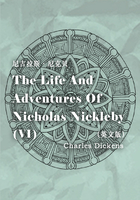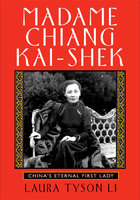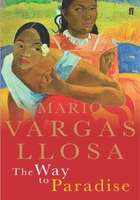TOOLS AND SUPPLIES
WEAVING TREADS THE LINE between art and craft. As a craft, there are enough rules to follow to get new weavers into a comfortable rhythm, while giving rule-breakers many opportunities to have a little fun. As an art, the umbrella of styles, fiber options, and project types is so wide that anyone can create a piece that suits their particular taste—minimalists can create clean projects in neutral tones, experimentalists can create explosions of color and texture. But regardless of why you want to get into this craft, first you have to learn the basics!
LOOMS
ALL WOVEN PROJECTS START WITH A LOOM. A loom an essential part of the weaving process—it is the structure that stretches and holds your framing threads (also known as the warp; see this page) organized and held at the right tension, while you interlace or weave your other threads (weft) into them. This is how the final fabric, or cloth, is created. When you are done with your weaving, you typically remove your project from the loom and display it separately. Hence, a loom is a tool used in weaving and does not necessarily remain with the final product.
There are many different types of looms ranging from simple, like frame looms, to complex, like floor looms. Frame looms, which are handheld looms, are the most basic and most widely available. They're sturdy, portable, and inexpensive, making them a great first loom for a beginner weaver. In this book, we'll be focusing on projects that can be made with rectangular frame looms, circular frame looms, and even "looms" made from found objects like branches or cardboard.
PARTS OF THE LOOM
TEETH or PEGS: The teeth, or pegs, are the notches along the edge of the frame that allow you to wrap the warp thread at even intervals, keeping it in place for your weaving. The number of teeth relative to the loom's width determines the density of the woven fabric.
FRAME: The frame of your loom is the rigid outer structure that holds the shape of the weaving you're creating. In a typical frame-style tapestry loom (for instance, in all of the projects featured in the Rectangular Looms chapter on this page), your weaving will be only as large as your frame.
WEAVING TOOLS
FROM LEFT TO RIGHT: Shuttles, Heddle, Forks/Weaving Combs, Scissors, Bobbins, Yarn and Tapestry Needles, Sword
01 YARN AND TAPESTRY NEEDLES
Tapestry needles are an important part of the weaving process. You use them to guide the weaving yarn (weft) over and under the warp threads, and that creates each row of your weaving. A tapestry needle differs from a standard sewing needle in a few important ways: it's much larger, has a blunter tip, and most important, it has a large eye that allows the thicker yarn to pass through. Many tapestry needles also have a bent tip, which helps you to pick up each warp string faster.
02 SHUTTLES
A shuttle is a tool that holds a long length of yarn while you weave, so you don't have to repeatedly rethread your tapestry needle, as you would if you were to use shorter lengths. To load a shuttle, you wrap yarn around the base lengthwise, laying it inside the notches at every pass until the shuttle is as full as you'd like. Then, you trim the yarn, leaving a long tail to weave with, and use the shuttle to guide the yarn tail through the warp. You can use this in combination with a weaving sword (see right) for extra-speedy weaving. (The shuttle is used in place of a needle, so you can cover a larger area at a time.)
03 BOBBINS
A bobbin is a tool for storing the yarn you're using as you weave. In weavings of many colors, separate bobbins are used for each color, so you can switch easily between different yarns. Bobbins are used in the same way as shuttles or needles. Shuttles are used to cover the largest areas, bobbins are used to cover smaller areas and for looping stitches, and needles are used to cover the smallest and tightest areas.
04 FORKS/WEAVING COMBS
A weaving comb, or fork, is used to evenly push down each row of weft fiber as it's completed. You can use your fingers to "beat down" the row, but a fork can help your piece look more tidy, even, and tightly woven.
05 SWORDS
A weaving sword, or shed stick, is another tool that helps speed up the weaving process if your project is comprised of mostly tabby stitch. To use the sword, weave it into your piece as if it were a piece of yarn, then turn it onto its narrow edge to open up a shed—the space between your upper and lower sets of warp strings. This large, open area allows you to quickly pass your weft yarn through the warp and to complete an entire row of tabby stitch in one movement. (Swords will open the shed in one direction only. You must still weave in the opposite direction.)
06 HEDDLES
Like a sword, a heddle is a tool that can be used to separate warps to open up a shed. The genius of the heddle lays in the alternating grooves that allow the weaver to open up sheds to weave in both directions.
MAKING A SHUTTLE
A shuttle can be a very helpful tool when weaving large areas of tabby stitch (see this page). To make your own, cut a small rectangle out of a piece of cardboard. For a standard sized loom, I use a shuttle that is approximately ?" x 8" (1.3 x 20.3 cm).
For larger projects where you will use a lot of bulky fibers, like the scarf on this page or a rug, you can cut your shuttle base a little larger, to approximately 4" x 10" (10.2 x 25.4 cm). Once you have your base, cut wide V-shaped notches in each short end. The notches will help you to wind more yarn without it getting bulky.
CHOOSING YOUR FIBERS
YARN COMES IN MANY DIFFERENT textures, materials, and weights. When you are beginning a new project, it's good to think about how you want your end product to look. Will it be organic or modern? Colorful or monochrome? Different fibers offer various characteristics that dictate both how you weave and the result. Thinner yarns give you a very neat, defined look, but take much longer to weave. Thicker, handspun yarns offer a softer, more organic look and are quick to weave up, but you won't be able to create designs with sharp, defined shapes or lines. Natural fibers treated with natural dyes offer a soft and subtle color story, while manmade fibers colored with synthetic dyes create a more vibrant result. I always think it is best to experiment with as many different types of fibers as possible to find the ones that resonate the most purely with you and can best help bring your vision to life.
NATURAL vs. SYNTHETIC FIBERS
I USE A VARIETY OF FIBERS FOR MY WEAVINGS, but I tend to use natural fibers more often than machine-made fibers, because I find natural ones are more interesting. I like the inconsistencies in hand-spun and hand-dyed fibers—not only do they create interesting textures, but the small differences in each type tell a story.
As such, most of my weavings are made from vintage and hand-spun fibers. In particular, I like to collect vintage machine-knitting cones that were once used in textile factories. Those factories' old inventories are a treasure trove of unusual and hard-to-find fibers. To add an extra dimension, I like mixing many fibers together in one woven piece—I use a lot of wool, cotton, alpaca, and silk in my pieces. Although I prefer to work with the natural fibers listed opposite and on this page, sometimes I add synthetic or non-traditional elements to my projects—like rope, pieces of leather (faux or otherwise), or raffia—to make the texture more interesting.
In this book, the projects are made of either thread, yarn, or fiber. Traditionally speaking, thread is made of cotton and yarn from wool, while fiber can be any material. You'll have fun trying out lots of different fibers—just make sure that you only use non-stretchy fibers for your warp.
Natural fibers may be made of cellulose or protein. Cellulose fibers, like cotton, are made from plants, while protein fibers such as wool come from animals. What follows is a selection of the fibers I use most often in my designs. You can see them pictured on this page.
CELLULOSE FIBERS
01 COTTON
Cotton is an extremely durable, but also very soft, fiber. It's a great choice for warp threads, and cotton-based yarns provide good definition in weaving. You can even weave with strips of cotton fabric! See the Rag Rug on this page or the Denim Catchall Basket on this page for how to use strips of cotton fabric as your base. Color choices abound!
02 LINEN
Linen is beautiful to weave with but is inelastic. Yarn that is made of, or includes, linen often feels very silky and can appear somewhat shiny. Linen can make for a good warp, but beware—it doesn't like friction. Too much friction weakens the fiber and causes it to break. Linen is best used in smaller projects. If you want to use lengths of linen fibers in larger pieces, it is best to use them doubled.
03 HEMP
Hemp is one of the most durable cellulose fibers. It starts out very coarse but softens up as it's handled. Due to the porous nature of hemp, it retains color very well and can be dyed easily to match your project. You can use it for both weft and warp.
04 JUTE
Jute is a long, soft, and shiny fiber. It is also very durable and one of the most affordable fibers out there. When jute is woven, it creates a burlap-like material. You can use it for both warp and weft, which creates a very toothy fabric.
05 RAYON
I'm referring to rayon as a "natural" fiber because it's made from wood pulp, but it undergoes such extensive processing before it becomes a fiber that it's usually considered synthetic. Rayon feels like cotton and is great for colorwork, as it sucks up dye really well to create lovely, bold colors.
PROTEIN FIBERS
06 SHEEP'S WOOL
Sheep's wool is probably the most common fiber I use for weaving. This type of wool is elastic, resilient, warm, and takes dyes easily. My favorite sheep's wool is hand-spun, and I prefer to buy naturally dyed fibers from small-batch producers, to give a more unique, organic look to my pieces. I also like to work with unspun sheep's wool, like locks or roving, to add different textures to my design.
07 SILK
Silk is the strongest of the natural fibers. It is breathable, hypoallergenic, and luxuriously soft. I love weaving with recycled silk strips in place of yarn. It adds the kind of bulky texture that can only be achieved by weaving with a ribbon shape. With silk you have many color choices, as seen in the projects on this page and this page.
08 ALPACA
Alpaca is a soft, durable, luxurious, and silky fiber. While similar to sheep's wool, alpaca is warmer, not prickly, and it has no lanolin, which makes it hypoallergenic.
09 ANGORA
The wool from Angora rabbits has a soft, thin fiber with a fuzzy halo, an effect that's even more obvious in woven fabric. While much warmer and lighter than sheep's wool, angora isn't naturally elastic, so it can be used for warp or weft. Angora is continuously renewed and gently harvested during the Angora rabbits' natural molting process; thus, the Angora rabbit need never be harmed for its wool. Thank you, rabbits!
10 MOHAIR
Mohair is the wool from Angora goats. Like Angora rabbit wool, it is a soft, thin fiber that feels luxurious while also maintaining integrity and durability. Mohair's fuzzy nature gives a stunning fluffy halo to your weaving projects.
FIBER WEIGHT
MOST BOOKS AND YARN MANUFACTURERS rely on standard terms to indicate a yarn's weight (thickness). Here are the most common yarn weights you'll encounter when shopping for your projects.
LACE
The lightest weight of yarn
SUPERFINE/FINGERING/BABY WEIGHT
A very lightweight yarn used for socks, items for children, and delicate projects
FINE/SPORT WEIGHT
A lightweight yarn used for throws, items for children, and sweaters
LIGHT WORSTED/DK WEIGHT
Used for lightweight adult items
MEDIUM- OR WORSTED-WEIGHT/AFGHAN/ARAN WEIGHT
One of the most popular yarn weights, great for all types of projects
BULKY
Heavier than worsted weight; builds up quickly
SUPER BULKY
Double the weight of worsted, or Aran, yarn
WEAVING BASICS
YOU COULD STUDY WEAVING for many years and still not scratch the surface. I weave every day and learn new things every time I sit down at the loom. Although there are many different stitches and methods for creating woven projects, I have tried to give you the simplest, quickest methods for getting started. Here, I've outlined the stitches and skills that I use the most to create a little weaving basics sampler (you can try your hand at all of these stitches by making the Woven Wall Hanging Sampler on this page). Use it as a sort of cheat sheet. Once you've mastered these techniques, you can continue to learn new stitches, tips, and tricks from vintage books and online tutorials, or by joining a weaving guild in your area.
WARP AND WEFT
ALL WOVEN PROJECTS ARE MADE UP of the same two elements: the warp and the weft. The warp threads serve as the underlying structure of your weaving—they run up and down, wrapped around the pegs of the loom, and thus create a base of vertical lines to weave into. Weft threads are then woven through the warp threads widthwise (horizontally) to create cloth.
PARTS OF THE WEAVING
WARP THREADS: Warp threads establish the basic structure or shape of your weaving. Wrapped around the loom's pegs, warp threads form the base of vertical threads that you can weave weft fibers into. Your warp threads should be made of strong, non-stretchy yarns that don't break easily. The best way to determine a good warp yarn is by applying a "snap test." Give your warp yarn a sharp tug-if it breaks or pulls apart easily, you'll want to try a different material. Good examples of warp threads are mercerized cotton (also called cotton rug warp), linen, rayon, and jute.
WEFT THREADS: Fibers that cross the warp in alternating over-and-under rows are known as the weft threads. Choose fibers based on the effect you want to produce in your piece. See this page for examples of what I like to use in my weaving projects.
BASICS
WARPING THE LOOM
01 The first step in weaving is to set up your loom! Holding a rectangular tapestry loom so that the pegs are at the top and the bottom, tie the end of your warp thread around the loom's bottom left peg. (A)
02 Draw the warp up and around the top left peg, then down again to the next peg in the bottom left corner. (B)
03 Continue the process until you reach the bottom right peg, then tie the warp in a double knot to secure it. (C+D)
04 Snip any excess warp, leaving a short tail.
BASICS
BASIC STITCHES & DECORATIVE ELEMENTS
Once your loom is warped, you're ready to weave! Here are a few of my most-used stitches and techniques for creating one-of-a-kind pieces.
TABBY STITCH
Tabby is the most basic weaving stitch, and is the easiest to create.
01 To start, warp your loom. Thread your tapestry needle with a piece of yarn that is two arm's lengths long. Begin the stitch at the bottom right, weaving under the first warp thread and over the second, from right to left. (A+B)
02 Continue "sewing" the yarn over and under the warp threads until you reach the end of the row. Pull the yarn through, until there is about a thumb's legth of yarn trailing from the place where you started. (C)
03 For your second row, start weaving from left to right above the row you just created, but this time, weave over then under, so that this row wraps the warp threads opposite to the first row. (D)
04 Be careful as you pull the yarn in this row—you want to be sure that it nearly touches the edges of your outer warp threads but doesn't pull on them or hang loosely. (A good way to make sure your tension is right is by using the "bubbling" method I describe on this page.)
05 Continue on in this manner, switching the orientation of your weft with each row. After every few rows, beat down the stitches with your fingers or use a weaving fork to create a really tight weave.
SOUMAK STITCH
Soumak is a diagonal looping stitch. When worked in two-row increments, it creates a row of stitches that look similar to knit stitches.
01 To start your soumak, cut a piece of yarn that is two arm's lengths long. Fold the yarn in half and loop it around the first two warp threads on the right. (A)
02 Then, tuck the end of the yarn behind the next two warp threads. Lightly tug your loop toward the base of your weaving. (B+C)
03 Continue on, passing your yarn under pairs of warp threads until the end of the row, tucking your yarn underneath the last two warp threads. (D)
04 To create a second row of soumak above your last row, skip the first two warp threads and lift the third and fourth warp threads from the left with your right hand, passing the yarn underneath from right to left. You will start to notice a V-shaped pattern in your weaving. (E)
05 As you finish the second row, do soumak on the last stitch, then pull the threads to the back of the warp. (F)
06 Weave in three rows of tabby above this row to lock in the stitch.
LOOPED TABBY STITCH
This looped variation of the tabby stitch is a great way to give your pieces textural interest. It looks best when created with a thick, chunky yarn.
01 First, weave a row of tabby; then, every time the weft crosses over the warp, give it a little pinch, pulling the yarn up and twisting slightly with your fingers. (A+B)
02 This will create little loops above your weaving, for a 3-D effect. (C)
03 Weave another three rows of tabby above it to lock in the stitch. From here, you can create a second row of looped tabby if you choose. (D)
RYA KNOT
Rya knots are stitches made from short, separate pieces of yarn that create a shaggy texture in your weaving. I like to begin my woven wall hangings with a row of rya knots to form a foundation for the piece, but you can also incorporate them randomly to add texture and interest to your projects.
01 To make a rya knot, cut four 6" (15.2 cm) pieces of yarn. Gather the yarn pieces together and fold the grouping in half.
02 Lay the U part upside-down on top of two warp threads, with the tails toward you. (A)
03 Bring the left tails around and under the left warp thread, and the right tails around and under the right warp thread. Pull both sides up through the space between the warp threads. (B)
04 Lightly tug the tails down (toward you), to set the rya knot. After completing a row of rya, always do three rows of tabby stitch above it to lock the rya knots in place. (C+D)
LARK'S HEAD KNOT
The lark's head knot is one of the most frequently used decorative knots in macramé, but I use it a lot in my weaving projects, too. It is used to attach or mount one cord or fiber to another, or to a ring or dowel.
01 To make a lark's head knot, fold one length of fiber in half (or use several lengths, as in the photos) and pass the loop underneath the place you want to mount it. (A)
02 Bring the looped section over the top of the base and pass both tail ends through the loop. Pull firmly. When tightened, the lark's head knot has a horizontal segment (made by the fold), which rests just below the mount point. (B+C)
TASSELS
Tassels are a quick and effective way to add a decorative touch to your work.
01 To make a tassel, wrap yarn at least twenty times around a piece of cardboard that is the length that you want your tassel to be. (A)
02 Cut a 12" (30.5 cm) piece of the same yarn and use it to wrap the wound fibers at one end of the cardboard. Tie the wrap off with a snug double knot and trim it to leave a 4" (10.2 cm) tail—this is the tie you will use to attach the tassel to your project. (B)
03 Cut through all of the bottom loops and remove the tassel from the cardboard base. (C)
04 Snugly wrap 30" (76.2 cm) of yarn near the top (tied end) of the tassel six to ten times. Tie the ends off with a double knot, then cut the yarn. (D)
05 Use a needle or crochet hook to hide the cut ends inside the tassel. Trim the tassel ends evenly and attach it to your work.
BASICS
TECHNIQUES
BUBBLING
A good way to make sure you are not pulling too tightly at the end of each row of tabby stitch (see this page) is by using a method I like to call "bubbling." Bubbling encourages the weft yarn to wrap over and under each warp thread uniformly, so that your weaving has the proper tension.
01 Once you have completed a row of tabby, push your yarn up in the center to create an arc. (A+B)
02 Next, push the yarn down with your fingers in sections: first, scrunch down the center, and then push down each side, and finally beat down the whole row. (C+D)
CHANGING COLORS OR ADDING YARN
This is an easy technique to use when you run out of weft yarn and need to add more, or decide you want to change up the colors of your piece.
01 Lay your new piece of yarn behind the warp thread where you ended, cross it over the old piece, and carry on weaving in the same direction, making sure to bubble each piece separately. (A)
02 Leave a 3" (7.6 cm) tail for each yarn—you'll weave these in at the end (see opposite). (B)
MAKING SHAPES
There are several ways to create shapes in weaving, but my favorite is a method known as diagonal slits, where you create slanted shapes with tabby stitches.
01 Weave a slanted shape, such as a triangle, in tabby stitch. Using that shape as a base, start to tabby stitch around it row by row. (A)
02 As you reach the edge of your base shape in each row, stop weaving when you reach the warp thread directly next to the shape (do not interlock the yarn or share a warp thread with your original shape). (B) When you reach the top of your base shape, stop, rethread your needle, and begin weaving from the other side.
BASICS
FINISHING YOUR WEAVING
SURGEON'S KNOT
When tying a fiber off on itself, as in beginning or ending your warp, the method I use most often is my version of a surgeon's knot, or double knot.
To create one, take the tail or working end of your fiber and cross it back over itself. Pass it under the original fiber, and pull it up through the loop you created. Repeat, then pull firmly to secure it as you position the knot where you need it.
REMOVING YOUR PIECE
There are many ways of finishing a piece and taking it off the loom—the results vary depending on the project and the type of loom you are using. But generally, all you have to do is pop the warp loops off the end pegs. If you are not hanging your piece, you can simply push a few rows of weaving toward the loops at either end to cover the empty space (the loops will keep the weaving in place and stop all your hard work from falling apart). If you are going to hang your piece, you will first insert a dowel into the top set of loops, and then gently push the adjacent rows of weaving toward the dowel to hold it in place.
WEAVING IN TAILS AND ENDS
When you finish a piece, you'll be left with many little ends and tails, from when you started and finished, added new fiber, or changed colors.
01 To weave them in, thread your needle and work the yarn back into your piece for about five warps below the last row of stitches you created. Pull the yarn to the back of the loom. (A+B)
02 To neaten your work, you'll need to turn it over to the back and trim each tail to 3" (7.6 cm) long. Then, using a tapestry needle, a small crochet hook, or even just your fingers, work the tail back into the weaving vertically, over and under the wefts directly above or below it, but in the opposite direction that it had been worked. (C)
03 Work back through at least four to six warps, and then trim any excess.
COLOR DESIGN AND HARMONY
COLOR CHOICE IS A VERY PERSONAL THING. What evokes a positive response in one person can just as easily make someone else feel ill at ease. We draw on our personal background, culture, and experiences when deciding if we like the way something looks.
While it's important to know the ways that different colors and shapes interact and how traditional color schemes are created, for most design projects you'll likely create custom palettes that don't strictly adhere to any predefined patterns. Be confident when choosing the colors for your projects—allow yourself to make decisions based on gut instinct and emotional response. If a specific palette moves you to "feel" something, then it will most likely evoke an emotional response in your audience. Here I'll teach you the basic rules so you can break them to suit your individual preference.
COLOR PLANNING
WHEN YOU'RE CHOOSING YARN COLORS for your project, it's helpful to know the basics of color theory as it pertains to the color wheel. A color wheel is based on the primary colors: red, blue, and yellow. These colors are called "primary" because you can't create them by mixing any other colors. All other colors in the wheel are derived from some combination of these hues. Secondary colors are green, orange, and purple, and they are formed by mixing any two of the primary colors. Tertiary colors—blue-green, green-yellow, yellow-orange, orange-red, red-purple, blue-purple—are formed by combining a primary with a secondary color.
The following color combinations can help you hit the sweet spot every time. Try playing around with them to find your own pleasing palettes for your pieces.
01 ANALOGOUS COLOR SCHEMES
Analogous color schemes use three colors that sit side by side on a color wheel like a primary and the pair of tertiary colors on either side of it, such as blue-purple, purple, and red-purple, or a primary, secondary, and tertiary.
02 COMPLEMENTARY COLORS
Complementary colors are pairs of colors that are opposite each other on a color wheel, like red and green or blue and orange. You can expand your color scheme beyond the complementary pair by using tones (colors muted with gray), tints (colors lightened with white; pastels), and shades (colors darkened with black). Using complementary colors can be unexpected and jarring to the viewer.
03 NEUTRAL COLORS
I use neutral colors as the basis of most of my designs. Neutrals are frequently accented with brighter colors, but they can be used just as often on their own to create very sophisticated designs. When you choose a palette of neutral tones, it gives you a chance to play with elements of texture that become the focus of a design. Gray, black, white, brown, tan, and off-white are generally considered neutral colors.
04 MONOCHROMATIC COLOR SCHEMES
Monochromatic color schemes are made up of various tints and shades of the same color. These simple, classic color schemes are easy to create, as they're all closely related to the same primary or secondary hue.
05 VIBRANT AND MUTED COLOR SCHEMES
Combining colors that have similarly muted or vibrant color schemes creates a sense of visual harmony. A piece using all vibrant or all muted colors can evoke a harmonious feeling. Adding a bright accent to an otherwise muted palette can be visually striking.
06 WARM HUES
Warm hues include red, orange, yellow, and variations of those three colors. They suggest fire, fall leaves, sunsets and sunrises, and generally are interpreted as energizing, passionate, and positive.
07 COOL HUES
Cool hues include green, blue, and purple and are often perceived as being more subdued than warm colors. They are the colors of night, water, and nature, and they are usually interpreted as calming, relaxing, and somewhat reserved.
Once you start playing around with colors, you will notice some quirks. A colored shape can look completely different against various backgrounds. Some colors appear more brilliant next to black than white. Others may look larger next to an analogous color but smaller and more brilliant close to a complementary color. The best way to figure out what you like is to just play around with your materials!
COLOR INSPIRATION
Although using the color wheel is a good start, I often get my best inspiration for color combinations from everyday life. Nature, in particular, is endlessly inspiring to me. Sometimes, nature comes up with unexpected color combinations that you don't necessarily find in traditional color theory, but for some reason they just work. When I'm feeling particularly stuck and need an extra dose of inspiration, I like to go for a hike, take a walk around the garden, or simply look at photos of nature online.
There are many other places to find inspiration, too. I like to look at archival photos of traditional costumes and swatches of vintage textiles. Take a walk along the street, and you will find color inspiration in street fashion and shop windows. Design and fashion magazines can be wonderful sources of ideas for combining colors that will create new and interesting looks. If you see a particularly interesting color combination in your daily life, try to take a photo or re-create it in a notebook. Organize your inspiration collection for later reference, to make all those color schemes more practical and easier to use in the future.
FINDING BALANCE & HARMONY
When applied carefully and thoughtfully, color theory can help you to achieve harmony in your piece. Using too many colors can result in a piece that looks busy or messy, but too few can end up boring.
Balance in art refers to the sense of distribution of perceived visual weights that offset each other. We feel more comfortable and find art most pleasing when the parts of an artwork seem to be in balance. Imbalance gives us an unsettled feeling, and that is something that, for most artists, is not the desired effect. Some artists, however, deliberately disturb our sense of visual balance.
You can achieve balance in two ways: symmetry or asymmetry. Create symmetrical balance in your piece by using identical parts, and the same number of parts, on each side of a design. Test whether yours is symmetrical by drawing an imaginary line through the center of your piece—does one side appear to be a mirror image of the other? Using symmetry makes your piece feel formal and ordered. Explore how the elements of design—hue, tone, shape, size, texture, repetition—can be played off one another so as to convey liveliness, variety, and informal visual balance. For example, a large, light-toned and textured shape, line, or area might be balanced with several smaller, darker ones.
WORKING WITH TEXTURES
Before beginning your project, it's a good idea to think about how the fibers you've chosen will behave once they are applied to your work. Sometimes, I make up small samplers with the fibers I intend to use in a larger project, to see if a particular material will work in the design I've created. Bulky fibers can vary in consistency, so they might be the wrong ones to use if you want to create a geometric shape with a clearly defined border. Very fine embroidery thread is perfect for small, delicate designs, but it would take a long time to fill in a large area, and it might break if you are challenging it to hold the structure of a piece, so you might instead use fine thread for decorations or embellishments. (See this page and this page for a full list of the fibers I like to use, and their individual qualities).
The best way to figure out which textures you like best is to explore and play with different kinds of fibers. You will soon figure out which ones work with your aesthetic and which ones don't.















